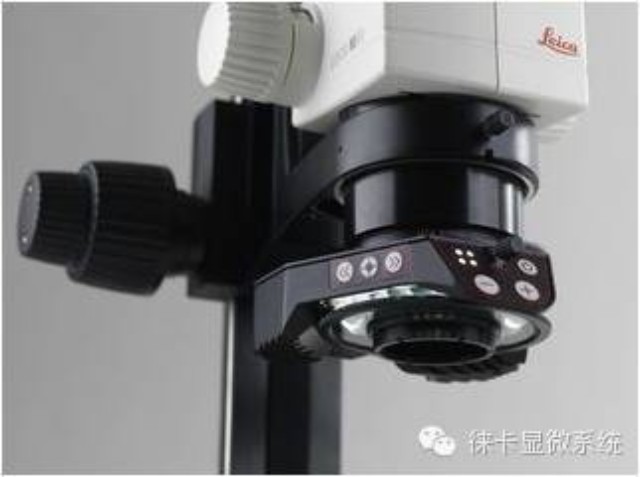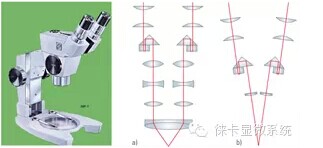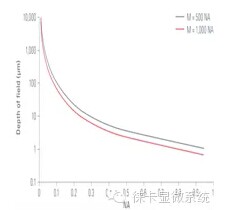How to choose a stereo microscope

Stereomicroscopes are often referred to as the main force in the laboratory or production department. What factors need to be considered when choosing a stereo microscope? The answer is: "Look at the situation." Why is this? Because it depends on the purpose, depending on the task the user wants to accomplish. A stereomicroscope is basically a tool for magnifying a three-dimensional object in three dimensions. Unlike a duplex microscope, a stereo microscope can handle this task.
background knowledge
Greenough and Cycloptic® Principles
The past binocular microscope was characterized by a simple lens system and the same design as a conventional duplex microscope. Such dissecting microscopes, as is well known at the time, were mainly used for anatomical purposes in biology; there were no technical applications at the time. Around 1890, American biologist and zoologist Horatio S. Greenough adopted a design principle that is still used today by all major manufacturers of optical instruments. The stereo microscope based on the "Greno principle" achieves a truly high quality stereo image.
In 1957, American Optics adopted a modern stereo microscope design with a shared main objective and was named Cycloptic®. Under its modern aluminum casing, it is the path of two parallel beams and the main objective, as well as a five-step zoom. In this stereo microscope, the manufacturer uses the principle of the Greenough or CMO (Ordinary Main Objective) and uses a modular, high-performance instrument. Two years later, another American company, Bausch & Lomb, presented the StereoZoom® design and made groundbreaking innovations: a one-step zoom (zoom). Almost all designs today are based on a zoom system.

(Left): Cycloptic®, the first stereomicroscope based on the telescope principle. 2a, b (right): Two basic principles of stereomicroscopy. a: Telescope or CMO principle b: Greenough principle.
Stereo microscope selection criteria
Today, stereomicroscopes are still based on the technical methods mentioned - the Green or CMO principle.
Four matters need to be carefully evaluated:
a) What is the purpose?
b) Which structure needs to be observed, recorded or visualized?
c) How many people are using the microscope?
d) What is the available budget for the solution?
Once the above factors are known, they can be summarized as the following criteria.
Magnification, zoom range and object field
Depth of field and numerical aperture
Optical quality and working distance
Ergonomics
illumination
Magnification, zoom range and object field
The total magnification of the stereo microscope is a combination of the magnification of the zoom, objective lens and eyepiece.
Zoom or zoom
Like a magnifying glass, the zoom is made up of optical lenses that can be used to change the magnification of the instrument. Changing the position of the zoomer will change the extent to which the image is magnified. The degree to which the image is enlarged is called the magnification. Modern stereo microscopes offer 16x magnification (only zoom), 20.5:1 zoom range, featuring motorization or coding for reliable measurements.
Next, the image is further enlarged by the eyepiece. To find the magnification of the target observed in the eyepiece, the user must multiply the magnification of the zoomer and the eyepiece.
However, to ensure completeness, the formula is as follows:

MTOT VIS is the magnification we want to calculate. VIS stands for "Vision."
z is the level of the zoomer.
ME is the magnification of the eyepiece.
MO is the magnification of the main objective lens (1 times when no auxiliary lens is used in the Greenough system)
Object field
When viewed from the appropriate distance into the eyepiece and the pupil spacing is set correctly, a circular area called the object field can be seen. The diameter of the object field varies depending on the magnification. In other words, there is a mathematical relationship between the magnification and the object field diameter. The number of yards provided by the 10x eyepiece is 23. This means that when the zoom body and the main objective lens are magnified by a factor of 1, the object field size is 23 mm. At 3 times magnification, the object field is reduced to one-third, that is, the diameter of the object field is only 7.66 mm.
Depth of field and numerical aperture
In a microscope, depth of field is often seen as an empirical parameter. It is actually determined by the correlation between numerical aperture, resolution and magnification. In order to get the best visual impression, modern microscope adjustment facilities produce an optimal balance between depth of field and resolution – two parameters that are theoretically negatively correlated.
Actual value of visual depth of field
On the issue of visual depth of field, Max Berek was the first author to publish his opinion. As early as 1927, he published the results of a large number of experiments. The Berek formula gives the actual value of the visual depth of field and is still used today.
Its simplified form is as follows:

TVIS: visual depth of field
n: The refractive index of the medium on which the target is located. If the target is removed, the refractive index of the medium is entered in the formula, which forms a varying working distance.
λ: the wavelength of the light used, λ = 0.55 μm for white light
NA: numerical aperture on the target side
MTOT VIS: Total visual magnification of the microscope
If the total visual magnification is replaced by the effective magnification in the above equation (MTOTVIS = 500 - 1000 x NA), it can be seen that the first approximation of the depth of field is inversely proportional to the square of the numerical aperture.

Especially when the magnification is low, the depth of field can be significantly increased by reducing the aperture of the lens (ie, reducing the numerical aperture). This is usually done by aperture on the aperture or on a conjugate plane. However, the smaller the numerical aperture, the lower the lateral resolution.
So the problem is to find the best balance between resolution and depth of field (depending on the target structure). In stereomicroscopes, a certain compromise is often required for higher depth of field, as the z-value of the three-dimensional structure often requires this.

Target plane of a Greenough stereo microscope with depth of field
More depth of field - FusionOpticsTM
FusionOpticsTM is a complex optical method that eliminates the relationship between resolution and depth of field in a stereo microscope. Here, one of the light paths provides an image of high resolution and low depth of field for one of the observer's eyes. Through the second light path, the other eye sees images of low resolution and high depth of field of the same target. The human brain combines two separate images into one optimal overall image featuring high resolution and high depth of field.
Another example of the extraordinary ability of the human brain is the Greenough stereo microscope. Here, the target planes of the left and right optical paths form a slight angle with each other. In the overall image, the entire area produced appears to be clear, although the left or right image is not.

Modern stereo microscope featuring a 20.5:1 zoom range, APO-corrected optics and FusionOpticsTM.
Optical quality
The optical quality of a stereomicroscope is usually listed as Achro or Achromat (achromatic), and Apo (apochromatic), representing the highest degree of correction for spherical and chromatic aberrations. The field curvature correction is abbreviated as Plan, and PlanApo is a combination of color difference and field curvature correction.
Achro, Achromat: Achromatic Correction
Plan: Flat field optical correction
PlanApo: apochromatic and flat field correction
What is the color difference?
In optical instruments such as stereo microscopes, chromatic aberration is a distortion, and the lens cannot concentrate all colors to the same convergence point. This is because the lens has different refractive indices (dispersion of the lens) for different wavelengths of light. The refractive index decreases as the wavelength increases. The purpose of good optical design is to reduce or completely eliminate this effect.
An achromatic lens is a lens designed to limit the effects of chromatic aberration and spherical aberration. The achromatic lens is calibrated to focus the two wavelengths (usually red and blue) onto the same plane. Such lenses or microscopes are used for tasks that do not require color reproduction and primarily evaluate geometrical properties. On the other hand, apochromatic lenses aim to correct three wavelengths (red, green and blue) and focus them on the same plane. Working distance
This is the distance between the front lens of the objective and the top of the specimen when the specimen is in focus. In most cases, the working distance of the objective lens decreases as the magnification increases. In stereomicroscopes, working distance is one of the most important criteria because it directly affects the usability of the microscope as a tool.

Ergonomic tube - the body and head are relaxed, the arms are comfortably supported, the legs have enough space, and the chair is fully utilized.
Ergonomics - thousands of people
People are tall and short, which makes instrumental requirements a personal problem. For example, a microscope equipped for a certain task, with accessories and a specific working distance, its existing height may be quite unsuitable for a particular user. If the height of the observation is too low, the observer will be forced to bend forward during work, causing tension in the neck muscles. Therefore, under ideal conditions, the viewing height and viewing angle of the microscope should be adjusted according to the user's body shape. In addition, the variable viewing height is the best way to prevent a posture that is completely sedentary. It allows the observer to adopt a personal sitting posture and periodically change according to the natural impulse to shift from side to side. Indeed, the height of the chair can be changed, such a relaxed, slightly curved posture replaces the previous squat, but this is not the best method. A simpler and more comfortable method is to use a variable binocular tube to compensate for differences in height.
Thanks to the modular approach, stereo microscopes with CMO designs can be customized in a variety of ways, depending on the user's size or work habits, and are therefore the preferred solution.
Illumination
In stereomicroscopes, illumination is the key to exposing all work to light. Proper illumination will visualize the desired structure simply by changing the type of light, or new information about the sample will be discovered. It is important to match the lighting correctly to the correct microscope and the correct application.

Modern stereo microscope lighting systems are based on long-lasting LEDs and offer a unique way to integrate solutions into the entire microscope system. The highly integrated ring light source and the polarizer in use are designed to reduce glare on the specimen.
Type of lighting
Incident
Incident light is primarily used for opaque specimens. The implementation of such light (annular light, spotlights, etc.) will depend on the specimen texture and usage requirements. Incident light is required for a variety of opaque specimens. A compromise option for incident lighting schemes is available based on specimen texture and result targets.
Transmitted light
Transmitted light is ideal for a variety of transparent specimens, ranging from biological samples (such as biological models) to polymers.
Standard transmission bright field illumination
Standard transmission bright field illumination for all types of transparent specimens with high contrast and sufficient color letter
Oblique transmission illumination
This lighting technology is used for almost transparent, colorless specimens. Due to the oblique position of the illumination, greater contrast and visual clarity of the specimen can be achieved.
Dark field illumination
Dark field observation in a stereomicroscope requires a special table including a mirror and a visor to move an inverted illumination hollow cone toward the specimen at an oblique angle. The principle elements of dark field illumination are the same for stereo microscopes and more traditional compound microscopes, usually with complex multi-lens concentrator systems or concentrating mirrors with special endoscopes that contain adjustments to specific geometries Reflective surface.
Comparison of clear and transparent specimens
Rottermann ContrastTM is a local illumination technology that displays changes in refractive index when brightness is different. The phase structure typically appears as a three-dimensional, embossed image (such as a hill) in a positive terrain contrast and as a recess in an inverted terrain contrast. This technique provides a number of variable views to extract the maximum amount of information possible.
in conclusion
A careful assessment of the needs of the stereo microscope is an essential element of the user's lasting satisfaction. Because it is the backbone of the lab or production department, decision makers need to ensure that they can customize the instrument to 100% of the user's needs. This requires a microscopy solution provider that can cope with these demanding needs.
China Extract Powder For Use As Dietary Supplement Extract Powder, Extract Powder Manufacturer
Shaanxi Kang New Pharmaceutical co., Ltd. , https://www.kangnewpharmas.com
